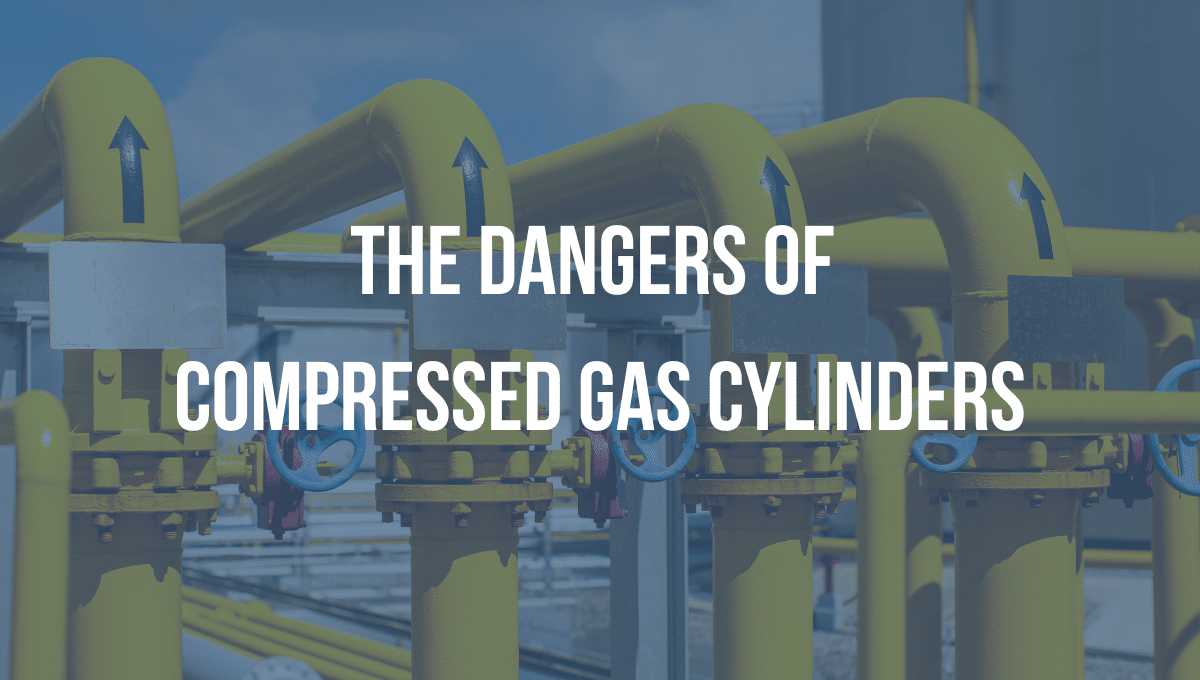The recent gas cylinder projectile fatalities in 2025 highlight the critical need for strict safety measures and protective PPE.
Grim Reminder: Workplace Safety Must Be Strengthened
In the first half of 2025, two separate workplace tragedies occurred. In one incident on 28 March, a worker disconnected a CO₂ cylinder and placed it upright. Suddenly, it shot into the air and fatally struck a nearby coworker. In the second incident on 15 May, an excavator’s electromagnet pressed on a discarded fire extinguisher cylinder, which then lofted and killed a seated worker.
Source
These horrific events emphasize how high-pressure gas cylinders can become deadly projectiles with devastating force.
The Dangers of Compressed Gas Cylinders
Compressed gas cylinders are essential in many industries — from manufacturing and welding to healthcare and research. However, they store gases at extremely high pressures, often exceeding 2,000 psi.
If a cylinder’s valve is damaged or broken, the sudden release of pressurized gas can instantly turn it into a high-speed projectile capable of causing fatal injuries or severe property damage.
In addition to blunt-force hazards, certain gases can also present fire, explosion, or toxic exposure risks if released uncontrollably.
Critical Safety Measures You Must Enforce
To prevent future tragedies, companies handling compressed gas cylinders must:
🔹Secure cylinders upright and fasten them to fixed supports
🔹Perform regular inspections for damage and leaks
🔹Use compatible connectors and protect valve fittings
🔹Store in ventilated areas and label cylinder status clearly
🔹Train all staff in safe handling and removal protocols
🔹Avoid manual crushing or mishandling near scrap or magnets
These practical steps significantly reduce the risk of cylinders becoming hazardous hazards.
WSH Council Safety Advice on Gas Cylinder Handling Procedures
In its advisory, the WSH Council urged companies to immediately review and strengthen their safety practices for compressed gas cylinders. Recommended measures include:
🔸Secure all cylinders when stored or in use, using chains, straps, or purpose-built racks.
🔸Keep cylinders away from heat sources, electrical circuits, and high-traffic areas.
🔸Transport cylinders safely using approved trolleys — never by hand or by rolling.
🔸Fit protective caps whenever cylinders are not connected to equipment.
🔸Conduct refresher training for all staff handling gas cylinders.
A Call to Action for Employers
Employers, safety managers, and workers must take these incidents as a wake-up call. Even everyday equipment can be deadly if mishandled.
Now is the time to:
✅ Revisit your Workplace Safety and Health protocols.
✅ Conduct immediate safety audits on gas cylinder storage and handling areas.
✅ Provide refresher training to all staff working with compressed gases.
Safety First — Always
Every workplace incident is preventable. The two gas cylinder projectile fatalities reported in the first half of 2025 are tragic reminders that complacency in safety can have irreversible consequences.
By prioritizing proper training, safe storage, and careful handling, we can ensure that compressed gas cylinders remain useful tools — not deadly hazards.
Lives depend on it.
If your workplace needs advice on PPE or cylinder handling equipment, our team is here to help. Contact us for support in keeping your team safe.
📩 Email: [email protected]
☎️ Contact: WhatsApp

